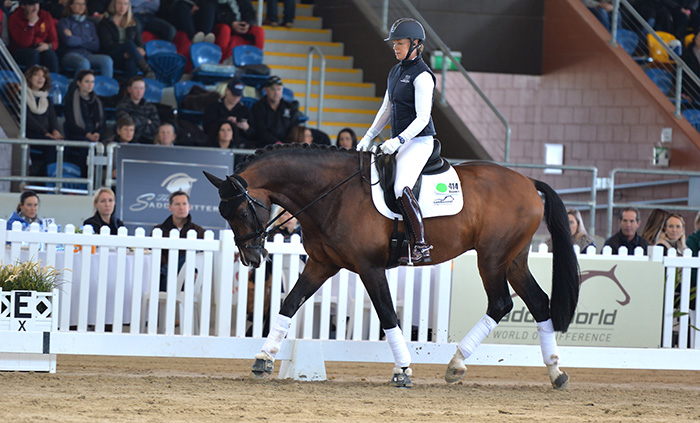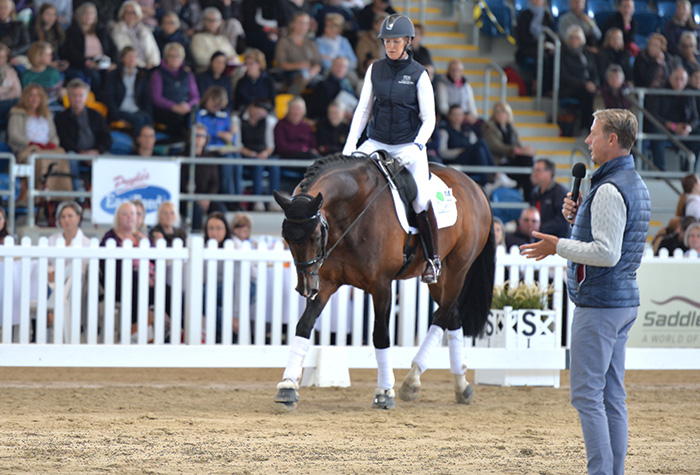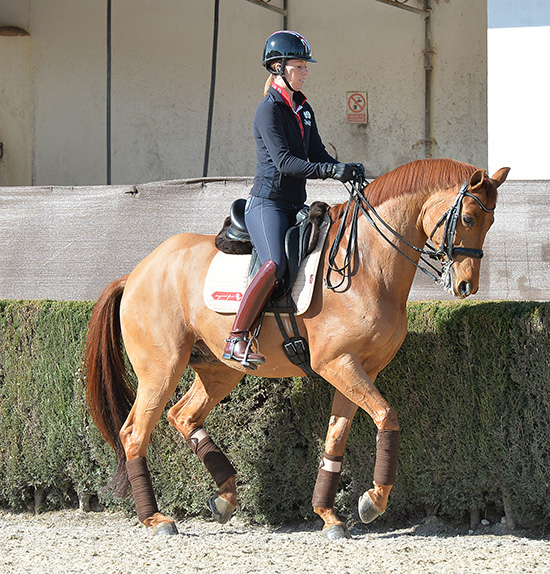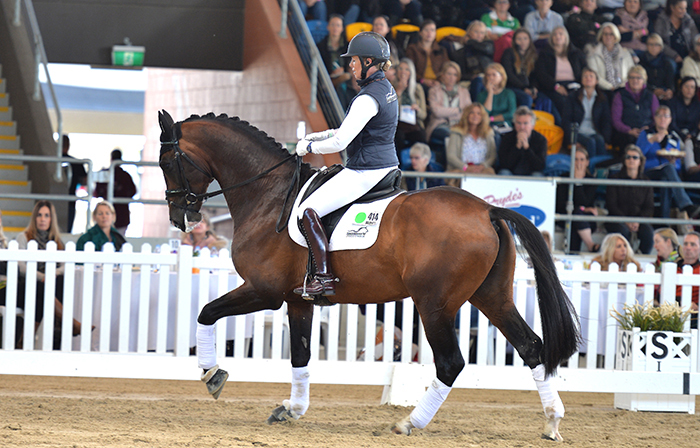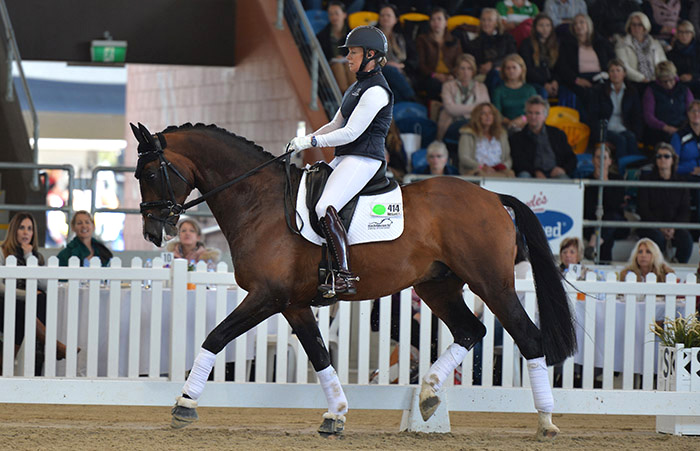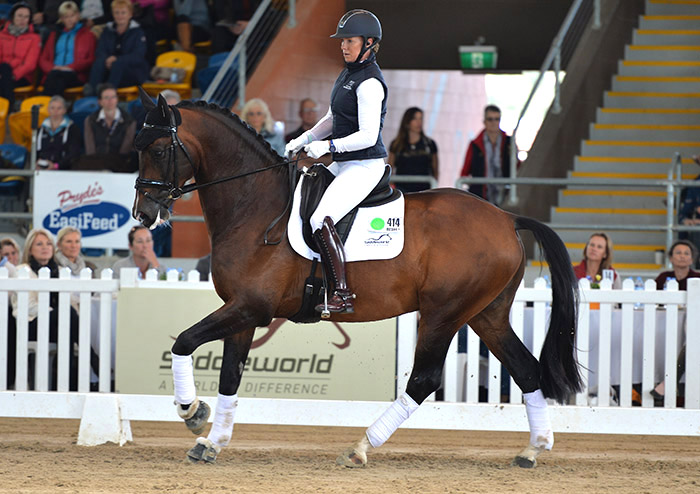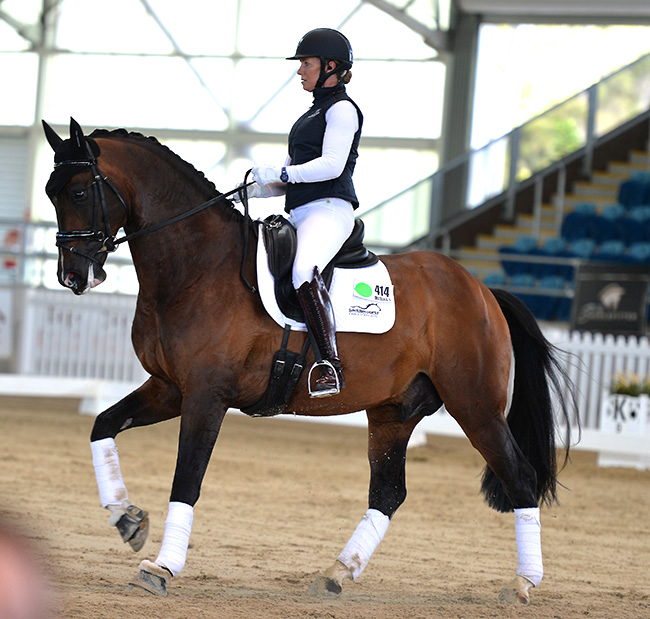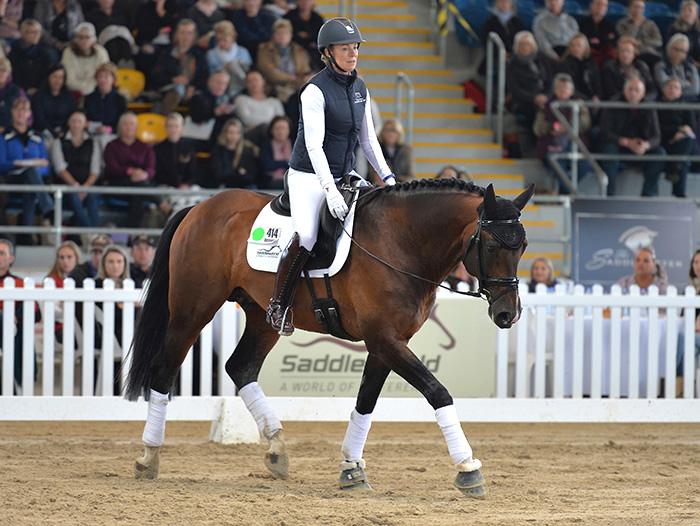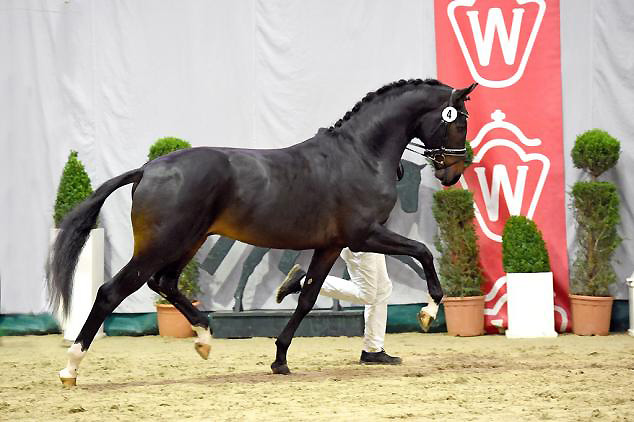Carl Hester talks about self carriage for BOTH horse and rider:
“We want the horse in self carriage, and that means the rider has to be in self carriage and without a strong core, that is very difficult to do. Then you won’t need your arms or legs to hold you in the saddle – they must be soft and independent of your body.”
The Carl Hester Masterclass. Carl works with an imported, Dutch stallion, Iresias L (Johnson / Ferro). The horse won the Australian 4-year-old title, and followed it up with a win in the 5-year-olds.
His rider, Gina Montgomery, was, before she saw the light, a star in the Hack Ring. Carl believes that the most difficult thing for a hack rider to change was the fixed outline, the fixed arms, and to learn to ride the horse to the bit.
“We want the horse in self carriage, and that means the rider has to be in self carriage and without a strong core, that is very difficult to do. It is worth riders spending the time getting the core strong, then you won’t need your arms or legs to hold you in the saddle – they must be soft and independent of your body. You must work to get better, Charlotte goes four mornings a week to the gym, then comes home and rides ten horses a day. There’s lots you can do to improve your riding.”
Charlotte and Barolo – a young Grand Prix horse – demonstrate
“If you can create what we try to create, without heavy hands, without hanging onto the rein, if you can do it with self-carriage, then it looks beautiful. It’s this word, expression, which is a dangerous word because once you put expression into it, like heightened suspension and things like that, then if you have got the wrong rider, or a rider who doesn’t ride with an independent seat, then they use their hands and that’s when you get that horrible looking, jerky dressage. It is something we really work on, to be able to create it, without going over-board.”
“Self-carriage is really easy to see. It’s that tension into the hand – it’s the first place you see it through the whole of the top line of the horse. The best thing you can do for self-carriage is the give and re-take of the reins. It is amazing how you forget to do that when you ride on your own.”
“Looking at this stallion, you cannot help but be drawn to his hind legs. The judges love hind legs like this, because they are very natural. It’s typical of Johnson.”
“Uthopia was brilliant as a stallion with his temperament and focus. Stallions can struggle with tension, or some go dead. I used to think mares were difficult, but they are not, stallions are. Now half our yard is mares, and half geldings.”
“I don’t want Gina to go more forward, I want the horse to go more to the bridle. Make the half halts to the ears and open the horse’s neck – don’t close his neck. Ride forward, but ride his neck up so the long steps stay in balance. Always keep the bend in your elbow, don’t flatten your arm or you will flatten his neck.”
“When Gina pushes with her leg and slows him, he gets heavy. I’m trying to stop that. Bring the horse back by bringing your upper body up, let your leg go forward, upper body back and look through the ears. When Gina’s half halt lasts too long, there is a little wrinkle (in the skin) in front of the saddle. The half halt should be for one stride, more than that and it shortens the neck.”
‘Johnny’ has a lovely canter, just like his dad: “The canter has an easy balance and quite nice use of the hind end – sit him up a bit and release the shoulders. I want to see the plait behind his ears, not the plait third from the top. Right now I don’t mind if he comes too high, it teaches him how to use his shoulders.”
“In the corners ask for half halts riding forward, and relax your body going out. If you feel the horse goes quicker when I say ‘go’, he has to come back again.”
It’s the sort of commentary that you can only get from someone who has done it themselves, but you can see little adjustments making a big difference.
“Don’t let the horse become buried, use the corners to get him uphill. Give the feeling of leg yielding from the outside, that’s really good when the horse falls out through the shoulder. Don’t sit against the bit, hands forward. Keep him under you, keep your upper body straight – not sitting back with your legs forward. If the horse pushes down on the bit, upwards half halt.”
And the rider was not immune:
“Gina NO nodding, that’s stiffness in your back, keep your head still.”
Stretchy time again: “Common sense tells us that if something needs to be supple, it can’t be in the same position all the time. Stretch the horse… Suppleness and stretching take years to get.”
Want to breed to a stallion with the lot? Consider Birmingham available from International Horse Breeders – he’s got the lot – by Johnson and carrying the bloodlines of Jazz, De Niro, Fidermark and Sandro Hit. Plus many more…
Go to www.ihb.com.au



